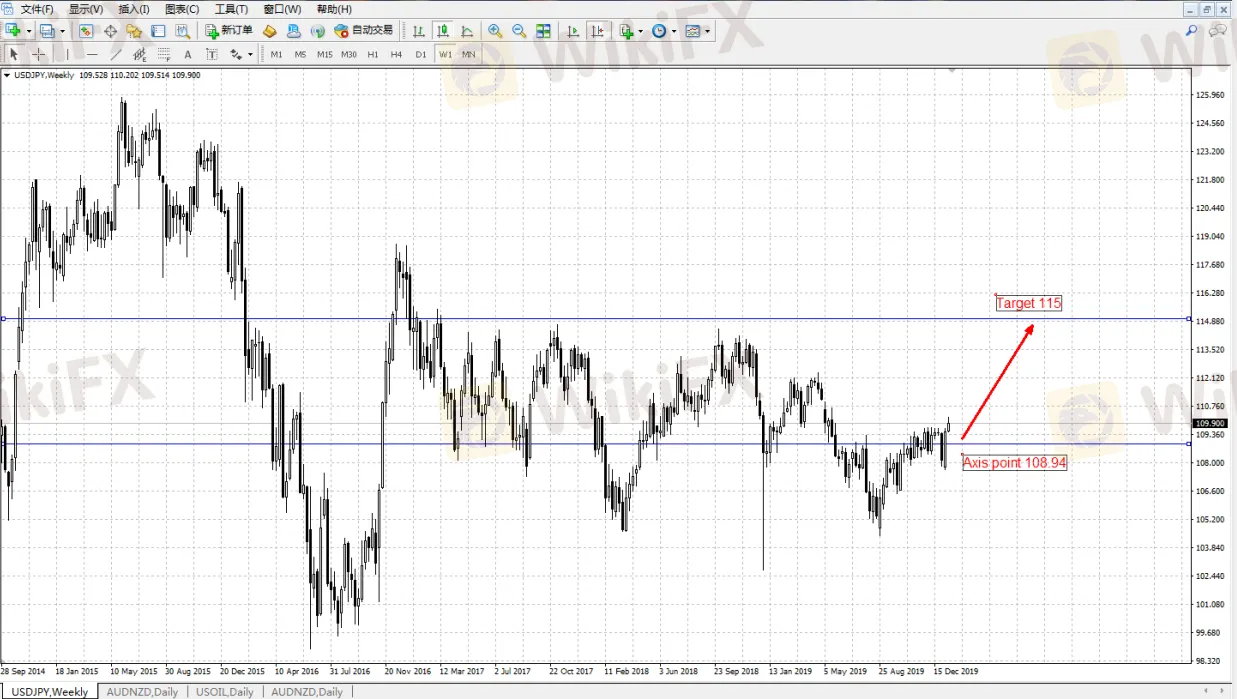简体中文
繁體中文
English
Pусский
日本語
ภาษาไทย
Tiếng Việt
Bahasa Indonesia
Español
हिन्दी
Filippiiniläinen
Français
Deutsch
Português
Türkçe
한국어
العربية
Arbitrage Involving JPY Has Become More Frequent
Abstract:The USD/JPY pivot point in the first half of 2020 will be at 108.94. If trade talks between the United States and China progress towards a positive direction, bringing more stability to the global economy, the yen may continue to move to 115 level.
History shows USD/JPYs annual fluctuation has remained under 10% for 3 years in a row, while the less than 8% fluctuation in 2019 has been a record low since 1980. When the market is “risk-on”, traders will usually actively conduct carry trade of the yen, when risk sentiment turns off, investors will be forced into short positions, selling high-yielding currencies while buying back the yen sold, which is why the yen strengthens in a risk-off environment.
But since sold off in the yen is rarely seen in recent years, the currencys appeal as a safe-haven has fallen sharply. If interest rates rise in other countries, resulting in a wider interest rate gap with Japan, this will encourage yen carry trades.
In terms of monetary policy, Japan's economy is in a moderate expansion, and the central bank will step up easing measures in face of upside risks. To meet its 2% inflation target, the Bank of Japan will maintain Quantitative and Qualitative Monetary Easing (QQE) through controlling its yield curve. The Bank of Japan will continue to expand its monetary base until consumer inflation stabilizes by more than 2%.
The USD/JPY pivot point in the first half of 2020 will be at 108.94. If trade talks between the United States and China progress towards a positive direction, bringing more stability to the global economy, the yen may continue to move to 115 level.

Disclaimer:
The views in this article only represent the author's personal views, and do not constitute investment advice on this platform. This platform does not guarantee the accuracy, completeness and timeliness of the information in the article, and will not be liable for any loss caused by the use of or reliance on the information in the article.
WikiFX Broker
Latest News
Russia to Fully Ban Crypto Mining in 10 Regions Starting January 1, 2025
Why is there so much exposure against PrimeX Capital?
Two Californians Indicted for $22 Million Crypto and NFT Fraud
WikiFX Review: Is Ultima Markets Legit?
Colorado Duo Accused of $8M Investment Fraud Scheme
What Impact Does Japan’s Positive Output Gap Have on the Yen?
Malaysia Pioneers Zakat Payments with Cryptocurrencies
FCA's Warning to Brokers: Don't Ignore!
SEC Warns on Advance Fee Loan Scams in the Philippines
OFX: Is It Good to Go? Broker Review
Currency Calculator


